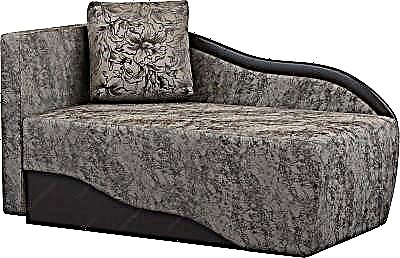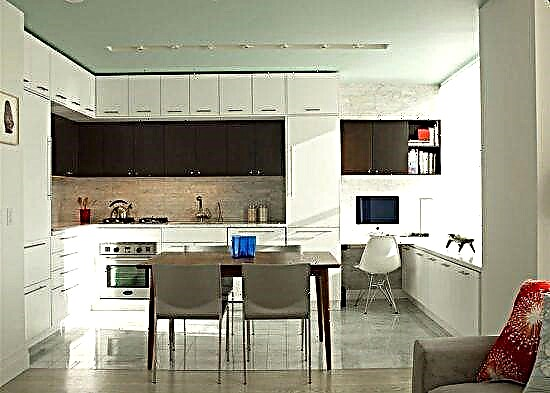A healthy and comfortable sleep of a child depends not so much on the chosen crib as on the mattress used. Russian and foreign manufacturers offer a huge selection of products for children of different ages, physique and weight. We will tell you how not to get confused among this variety and choose the best children's mattress.
Mattress size

The first thing to do to choose the right mattress is to take measurements from the crib: along the outer and inner perimeters. In order not to make a mistake in the store, take a centimeter tape with you, since all manufacturers label their products in different ways.
The main parameters that allow you to choose the right mattress:
Length. She should be 10-15 cm larger than the height of the child. For younger children from 3 to 12 years old, standard mattresses are suitable, the length of which is from 160 to 190 cm.
Width. It should be at least 2 times the width of the shoulders of the child. Width is usually from 60 to 120 cm.
Thickness. The recommended parameter is from 15 to 24 cm. Keep in mind that the thickness of the mattress should allow the child to easily lie down and also easily get out of bed.
Special products are produced for newborns, the length of which is 95-120 cm and a width of 60 cm. Mattresses of such sizes provide reliable support for the spine of the baby. However, the sizes of cribs may vary, therefore, when choosing, it is necessary to proceed from them.
Thin products are recommended for children who sleep on a sofa or a folding armchair. It is important that the dimensions of the mattress match the parameters of the crib. Large gaps between the edge of the product and the sides lead to inconvenience to the child during sleep.
Design
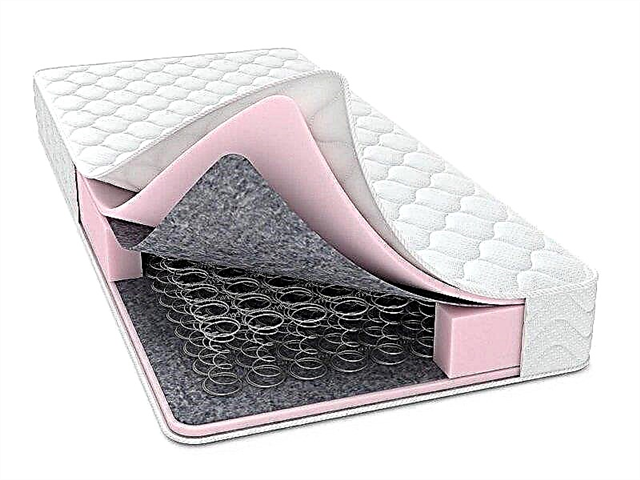
A key characteristic of each mattress is the presence or absence of a spring block in it. Looking ahead, it is worth noting that both types are suitable for a comfortable and complete rest.
On springs. They are not recommended for babies up to 3 years old, so they are usually bought for preschool children and adolescents.
They are divided into several categories:
- With dependent spring unit. Inexpensive models, but with little orthopedic effect. All springs are fixed in a steel frame, which ensures the safety of the resting child and prevents its accidental fall during sleep.
- With independent unit. They are great for kids who need spinal support (for example, in the presence of diseases of the musculoskeletal system). Of the minuses, it is worth highlighting the large weight of the products that cribs are not always able to withstand.
Without springs. The inner part of such mattresses is made of one or 2-3 layers of filler. It can be natural or synthetic. We recommend choosing mattresses whose design consists of a combination of several materials. Springless products are an excellent solution for newborn babies and children aged 1-2 years.
Filler

The filler determines the stiffness, elasticity and resilience of a children's mattress. Of course, for children it is better to choose natural "breathing" materials that do not interfere with oxygen circulation and are able to withstand even the highest loads.
The most common natural fillers:
- Latex. Advantages: firmness and elasticity. It provides excellent support for the spine, so latex mattresses are often chosen for children from 1 year to 4-5 years old.
- Coconut Coir. Advantages: does not absorb moisture, hypoallergenic material. An excellent choice for children with an increased tendency to allergic reactions,
- Horsehair. Advantages: resilience and wear resistance. Costly material used only in premium mattresses.
Synthetic fillers are much cheaper than natural and easier to care for, but not recommended for children under 3 years old. They need to be changed every 6-7 years, because over time some models lose their shape and are squeezed under the weight of the child.
The most popular synthetic fillers:
- Polyurethane foam (foam rubber). Advantages: high elasticity and excellent breathability. Keep in mind that the material does not cause allergies,
- Hollofiber. Advantages: excellently retains heat, does not lose its qualities for a long time. The best choice for children from 5-6 years old,
- Memorix. Advantages: the ability to adapt to the shape of the body. Sleeping on a mattress with such a filler will be as healthy and comfortable as possible.
Upholstery
We recommend choosing mattresses whose upholstery is made of durable fabric. Basic requirements: strength, wear resistance and breathability. Mattresses for children can be upholstered in natural materials: cotton or linen.
Also on sale are products with artificial fabrics, the most widely used of which is polyester. It does not absorb moisture at all, it is easy to care for and affordable cost.
Combination upholstery is the best option if your financial possibilities are limited. Children's mattresses with jacquard (composition: cotton threads and polyester fibers) are presented in the lines of most domestic manufacturers.
Regardless of the material, the product cover can be removable and non-removable. We recommend choosing the second option, as it guarantees a snug fit to the mattress. Take a mattress pad in the kit, it, unlike a removable cover, is easily erased at home.
Rigidity

The main function of a children's mattress is to ensure the correct position of the spine. In total, 3 groups of products are distinguished: soft, medium-hard and hard models. For children, only the last two types are suitable, the use of the first is not allowed.
Hard mattresses. An excellent solution for newborn babies, children aged 2-3 years, as well as children with diseases of the lumbar spine. The filler in such products is latex or holofiber.
Medium hard. They are recommended from 3 years, therefore they are considered universal products. Typically, several materials are used simultaneously as fillers, differing in degree of rigidity.
Note! If your baby has diseases of the spine, then be sure to consult your doctor about the stiffness of the mattress.
Versatility
The predominant part of mattresses is one-sided, but bilateral products are represented in the lines of some manufacturers. Their feature is the type of coating that can be comfortably used at any time of the year. For example, the “winter” side of the mattress is distinguished by a soft filler and a layer of natural wool, and the “summer” side is upholstered with absorbent fabric, providing unhindered air circulation.
Double-sided mattresses are a wonderful choice for children, regardless of their age. If your financial capabilities allow, we recommend you to take just such a model.
Orthopedic mattress
If a child has diseases of the musculoskeletal system, we recommend buying an orthopedic mattress. Its cost is higher than that of standard products, but the design provides maximum support for the spine and reproduces the contours of the body.
For healthy children, an orthopedic mattress will serve as the best prevention of almost all diseases associated with the motor system. Keep in mind that most of these products are equipped with an independent spring unit, so they are not suitable for newborns.
Age
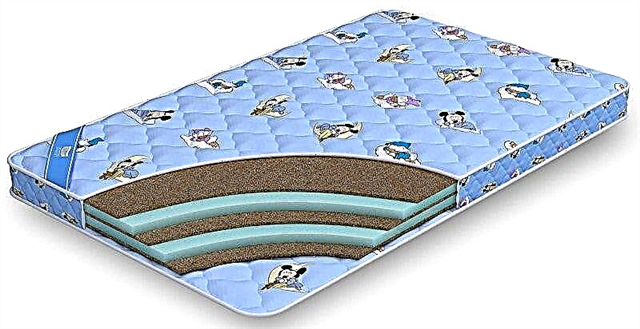
When choosing a children's mattress, be sure to consider the age of the child, since it is he who determines the features of the development of the musculoskeletal system:
Up to 2-3 years. Rigid products will be the best solution, because during this period of time, the baby begins to form the correct bend of the spine and musculoskeletal system. On a soft product, the skeleton will not receive sufficient support, the likelihood of distortions will increase significantly.
For 3, 4, 5 years. Doctors recommend giving preference to models of medium hardness, while the internal filler may be coconut or latex. If your child likes to play or somersault in bed before bed, then the chosen model should be resistant to high loads.
From 6-7 to 12 years. You can choose not only springless mattresses, but also products equipped with an independent unit. There are no restrictions on the choice of filler, but the product should be thicker than those used at an earlier age. Recommended hardness level is medium.
Before purchasing a baby mattress, make sure that the products are certified and free from specific odors.
Manufacturer
Choose mattresses for children only from reliable Russian or foreign manufacturers. If you decide to save money and buy a product of a little-known brand, then be sure to request a Quality Certificate!
Companies you can trust:
- Askona. The Russian manufacturer, in whose collections spring and springless mattresses are presented,
- Mediflex. Domestic company specializing in the production of orthopedic products with various fillers,
- Dormeo. An Italian brand offering a huge selection of mattresses made from natural materials for children,
- IKEA. A Russian company producing products of consistently high quality at very attractive prices,
Among other brands offering comfortable, safe and high-quality mattresses are: DreamLine, Peligrin, Lance Elin, Violight, Sakura, Ormatek.
Cost
Russian and foreign manufacturers offer such a huge selection of children's mattresses that you can easily find a quality product that is well-suited for cost. For example, a mattress with natural linen upholstery and orthopedic foam flooring from Askona can be purchased for 10,990 rubles. The same mattresses from "Ormatek", equipped with a system of independent springs, are slightly cheaper - 7,490 rubles. If you are looking for lower cost models, then pay attention to the products of the Russian brand "Sakura". He offers children's mattresses with coconut for just 6 940 rubles.
Similar mattresses from foreign manufacturers will cost more - from 10,000 rubles. and higher. In their manufacture, innovative technologies and exclusively natural materials are used. The upper price threshold is unlimited and can reach several hundred thousand rubles. Keep in mind that springless mattresses are 30-35% more expensive than products with springs.
More about varieties
The models on sale differ in the following characteristics: 
- the presence or absence of springs,
- if there are springs, they can be independent or fastened together,
- type of filler: coconut coir, polyurethane foam, latex and other materials,
- number of inner layers
- the material of manufacture of the outer layer,
- stiffness - the need is determined depending on the age of the child, his spinal problems and other factors,
- with or without antibacterial treatment.
Some anatomical mattresses for children come with a cover. If not, a cover or mattress pad is recommended to be purchased separately. They will protect the mattress from pollution, the appearance of scuffs and deformation.
Features of children's models
If you are still thinking about whether the child needs an anatomical mattress or if the properties of the anatomical product are enough to maintain health, we recommend that you consult the opinion of doctors. Experts advise children under 2 years of age to purchase any of the models - they provide good support to the spine and muscle frame. An incorrect sleeping place creates not only certain inconvenience, it can cause curvature of the spine, muscle clamps, headaches and other health problems.
Children older than two years old can use any anatomical mattress of medium hardness. This bed adapts to the characteristics of the body, allowing the muscles to relax, and the spine to take the most natural position and maintain it during sleep.
Children's models must comply with statutory standards. Choose products from trusted brands to be sure of their quality. Analogs that do not have quality certificates are cheaper, but may be unsafe for health. So, the composition of the filler often includes formaldehyde and other harmful substances. It is desirable that the surface of the mattress and the inner filling are made of the most natural materials.
Requirements for the mattress depending on the age of the child
 When choosing a children's mattress, it is necessary to focus on the age characteristics of the body. For example, a mattress for a baby who has just been born, must necessarily be tough. Experts recommend paying attention to models with coconut coir filler. This material does not cause allergies, which is important when organizing a sleeping place for newborns, as they have very delicate skin. In addition, coconut is a dense filler that provides the necessary support to the fragile spine and protects it from the slightest curvature. Variants with a spring unit are not yet needed: they should not be used until the child reaches the age of three to seven years, the recommended standard is a children's model of medium hardness. Coconut coir processed with latex, polyurethane foam and other materials can be used as filler. During this period, the child grows very quickly. The spine needs good support - this will help to avoid its curvature, as well as the appearance of clamps in the neck and, as a result, headaches. However, the berth should not be too hard. An exception is special cases when such an anatomical effect is necessary for medical reasons.
When choosing a children's mattress, it is necessary to focus on the age characteristics of the body. For example, a mattress for a baby who has just been born, must necessarily be tough. Experts recommend paying attention to models with coconut coir filler. This material does not cause allergies, which is important when organizing a sleeping place for newborns, as they have very delicate skin. In addition, coconut is a dense filler that provides the necessary support to the fragile spine and protects it from the slightest curvature. Variants with a spring unit are not yet needed: they should not be used until the child reaches the age of three to seven years, the recommended standard is a children's model of medium hardness. Coconut coir processed with latex, polyurethane foam and other materials can be used as filler. During this period, the child grows very quickly. The spine needs good support - this will help to avoid its curvature, as well as the appearance of clamps in the neck and, as a result, headaches. However, the berth should not be too hard. An exception is special cases when such an anatomical effect is necessary for medical reasons.
After seven years, children continue to grow rapidly. A good choice would be the option with a filler made of special foam with a memory effect. It adapts to the contours of the body, providing maximum comfort during sleep. During this period, you can purchase a product with an independent spring unit. A comfortable sleeping place for a growing organism is very important, as it allows the child to sleep well and restore strength for the next active day.
Everything for quality sleep
You will find a truly large selection of anatomical mattresses for children and adults in the Askona online store. We have models for both a newborn's crib and a teenager's berth. Seek advice if you need advice on choosing the right mattress. We will help you choose the option that will ensure a comfortable sleep and well-being.
Not all mattresses for newborns are orthopedic


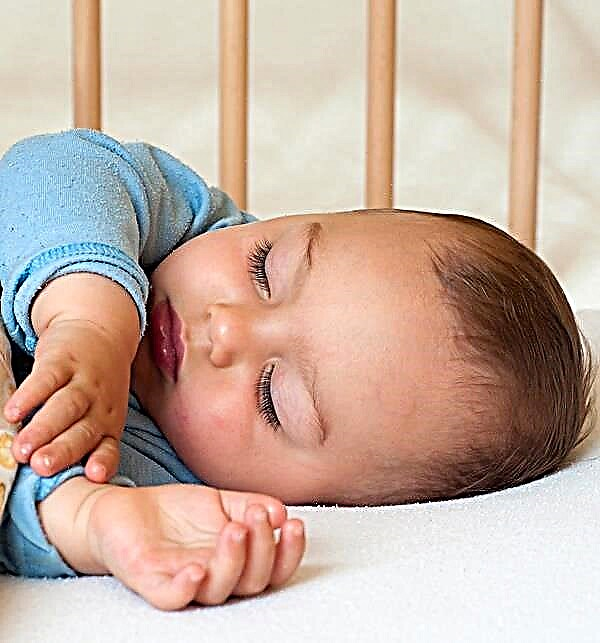
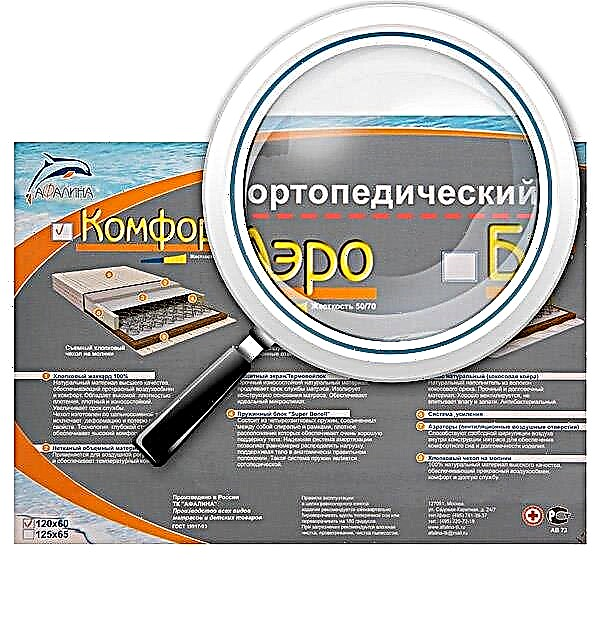
Many mattresses on the market are positioned as orthopedic, although in reality not all of them are. An orthopedic mattress is one that will support the body of the newborn during sleep in the correct position. “Correct” in this case means healthy. Such a mattress for a newborn will not only contribute to its harmonious physical development, but will also prevent possible diseases of the musculoskeletal system. Given that the described qualities can be present in the mattress only partially, it is ethical to talk about the orthopedic effect and the degree of its severity in each mattress.
Not every children's mattress has the proper functionality, therefore, the specialists of the Daughter-Sonochka online store give an answer which modern products meet the requirements for orthopedic mattresses and which do not.
Does the child need an orthopedic mattress?
“The orthopedic mattress supports the spine, repeating its natural bends. But newborn children do not have such bends: they develop by 2-3 years, and until this age the back of the child is completely straight, so children from birth to two years old need a hard orthopedic mattress to ensure an even position of the spine and free breathing. ”
Pediatrician
Lyudmila Sokolova
Children of this age sleep a lot, and a correctly selected mattress serves as a means of preventing spinal diseases for them. Studies have shown that even the mysterious sudden death syndrome is almost not found in children sleeping on an orthopedic mattress.
Children over two years of age need another orthopedic mattress, a softer but supportive spine. The correct position of the spine in bed is especially important for students who spend a lot of time sitting at the table during the day, and their backs are often bent in the most incredible way. And sleep on an orthopedic mattress makes it possible to relieve daily stress from the spine and back muscles.
Products with dependent spring unit



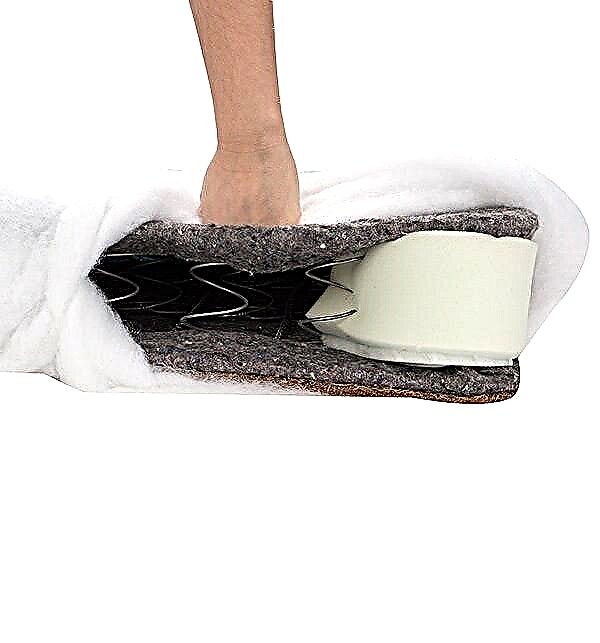
Products with a dependent spring unit (bonnell type) have an important structural feature: all springs in the unit are interconnected. This means that when you press one of the springs, several neighboring ones are compressed, and the stronger the point pressure, the greater the surface area of the mattress will be pressed. This adverse manifestation is minimal for mattresses, where the density of the springs in the block is high and their diameter is extremely small.
This type of mattress is not intended for sleeping a newborn, because the described design is not able to provide the correct anatomical support for the child during sleep.
At an early age, it is also advised to refuse a spring mattress because the release of children's energy in the form of physical activity is likely to affect this product: jumping on the bed will not harm the springless mattress, but the contents of the spring analog will not withstand such treatment.
If your choice fell on this particular type of children's mattress, we recommend choosing a model reinforced around the perimeter with a steel frame. The frame will allow the product to remain “in shape” for a long time, and in addition, such a mattress is more comfortable for sleeping than its frameless counterparts.
Mattresses with independent spring unit

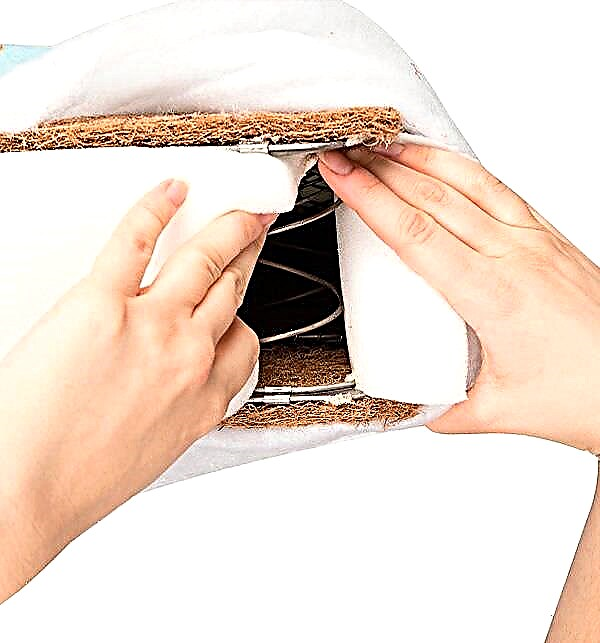
Mattresses with an independent spring unit (labeled TFK or Pocket Springs). The design consists of springs, each of which is fixed separately (which means that when pressed, only a specific spring is pressed) and packaged in an individual case. Thus, the desired orthopedic effect is achieved. Good mattresses in this category have sufficient noise insulation so as not to rustle and creak, not to disturb the sensitive sleep crumbs.
It is also worth paying attention to the composition of the fabrics that were used in the manufacture of this mattress. Metal springs in combination with synthetics generate unnecessary electrostatic stress, which by no means has a beneficial effect on children's sleep and the body.
There is a more expensive variety of mattresses with an independent spring block (multipocket), where the density of the springs is high - 500 pcs. and more per square meter of product. A significant density of springs in such a product (respectively, and its high cost) does not play any role for the baby's health. The weight of the child is still not enough to significantly crush the mattress, and even the low density of the springs will cope with the task of orthopedic support for the child during sleep. An exception must be made only on the recommendation of a doctor, if there is an appropriate medical condition.
In spring mattresses, a layer of filler and insulation is located on top of the springs - the same as those used to create springless analogues. If we are talking about a mattress with a dependent spring unit, then the top layer of filler provides this bed with some semblance of an orthopedic effect. The exception is mattresses with a “bonnel” block, in which the gasket is made of cotton or foam rubber. If there is no additional insulation layer, then very soon the baby will have to get acquainted with uncomfortable sleep on bare springs, since this type of insulation quickly wears out and becomes thinner. Such products for children are better not to purchase.
Classification of springless mattresses by type of filler

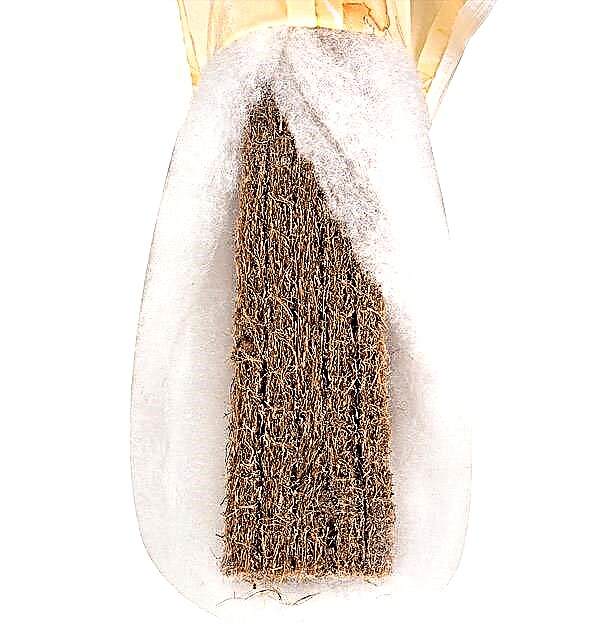

High-quality springless mattresses have the so-called effect of a thousand springs. This means that they most fully meet the needs of the child's body for a comfortable and healthy sleep, providing the correct anatomical support and a noticeable orthopedic effect.
At first glance, it might seem that a springless mattress may not have sufficient rigidity when it comes to a bed for a newborn. This is not so: high-quality springless mattresses are made according to a special technology, which even without a frame and springs allows you to create the necessary rigidity of the mattress.
Another plus in favor of springless products is the absence of metal components in them. This means that the baby’s body will not be affected by electrostatic stress.
Specialists of the online store “Daughters and Son” offer to figure out which fillers will be suitable material for creating a comfortable and healthy sleeping place.
Natural latex mattresses for babies

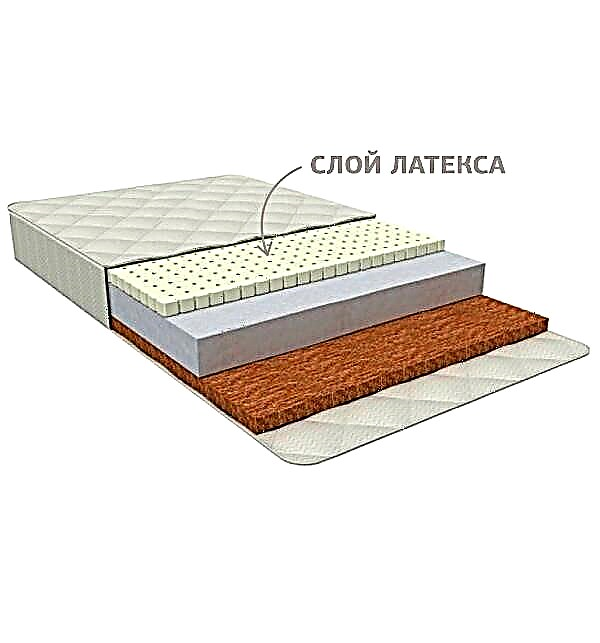
Latex is a porous and elastic material of natural origin. It is made from hevea juice (rubber tree), which pre-foams: an elastic material with excellent orthopedic qualities due to the ability to quickly restore its former shape is obtained.
Often, latex acts as an additional material for the mattress filler, and latex impregnation is present in coconut fiber for mattresses for newborns.
This hypoallergenic and truly versatile material is used for the manufacture of mattresses for all ages. The main and only drawback of products of this type is their high cost.
Coconut Mattresses
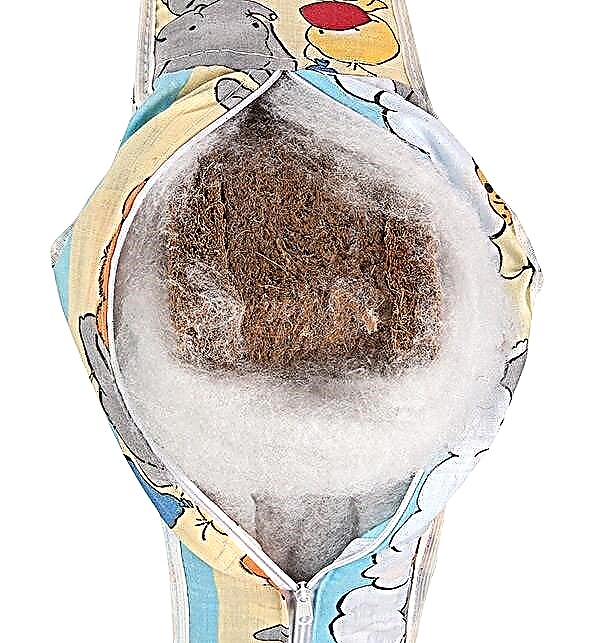



Coconut coir is the most common material for stuffing children's mattresses, beloved by parents for its naturalness, good ventilation and high wear resistance. According to the online store "Daughters and Son", such mattresses for a newborn are preferred by 76% of buyers.
Products made from coconut are characterized by increased rigidity. According to experts, such a mattress is suitable for infants and children up to 6-12 months, providing them with appropriate orthopedic support for healthy sleep and development. Koyra can be combined with other stuffing materials.
There can be several layers of coconut fiber in the mattress, and the more there are, the higher the orthopedic effect for healthy sleep of infants. There can be up to 9 such layers - exactly as many coconut plates in a Kid’s Care mattress. Coconut classic
Coconut fiber is completely hypoallergenic, but requires additional processing. In the children's industry, environmentally friendly and safe natural and artificial impregnations are used, which prevent the accumulation of dust in the mattress and create adverse conditions for the habitat of insects.
Coconut is a filler that often acts in tandem with another type of mattress padding, for example, latex. The combination of “coconut + latex” is present in the Kid’s Care Latex Lux mattress.
Another nice advantage of coconut products is their very affordable cost.
Seaweed Mattresses

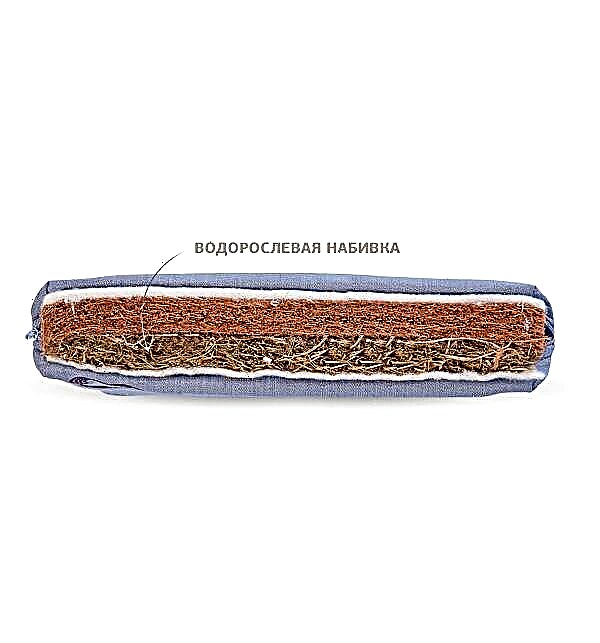
Seaweed as a filler for a newborn’s mattress perfectly copes with the role of the orthopedic bed. This is a medium hardness pack (slightly softer than coconut coir), which is hypoallergenic and able to excrete iodine microparticles, which has a beneficial effect on the crumbs: strengthens the immune system and relieves nervous excitement.
Such mattresses are well ventilated, keep their shape for a long time, do not accumulate moisture and are not subject to decay. Suitable for sleeping children from birth to year. The cost of such mattresses is low.
Holofiber mattresses

Hollofiber is a relatively new synthetic material made of polyester fiber curled in springs. This form makes hollofiber more resilient and breathable compared to the closest analogue - syntepon. The elasticity of the material gives it the qualities that are in demand in the production of children's orthopedic mattresses.
In children's mattresses, holofiber can act solo, but it is also often used as insulation on spring mattresses, it is also used to create springless models. Among the latter, a tandem of holofiber and a coconut coir is common (as an example, the Kids Care Holo mattress): their layers alternate. Mattresses from hollofiber alone are recommended for children over one year of age and are labeled as medium hard, soft and combined.
Hollofiber mattresses are characterized by high wear resistance, they are not subject to caking, do not accumulate odors and moisture, do not support combustion and do not cause allergic reactions. Such material is an unfavorable environment for the reproduction of bacteria and the life of ticks.
In the case when hollofiber is used in combination with other fillers for the production of mattresses, age restrictions on the use of such models are dictated by the main material.
Cotton Mattresses

Their main (and perhaps the only) advantage is the low price. But the disadvantages are more than enough. Firstly, such a mattress quickly lumps into lumps. With proper care (daily shaking, frequently turning over, avoiding contact with moisture), the formation of lumps is delayed for a while, and the life of such a product increases, but its use for children's sleep remains doubtful.
Vata is a natural, but extremely hygroscopic material that accumulates moisture from both air and leaked diapers, resulting in a favorable environment for the propagation of pathogens inside the product.
Thanks to the tradition of acquiring cotton mattresses and low cost, they are common in kindergartens and hospitals. For a home, it is better to purchase a more expensive model, from materials that can provide a good orthopedic effect and ventilation.
Polyurethane foam mattresses for children

Made of foamed polymer, children's polyurethane foam mattresses have a number of remarkable qualities, the most important of which are hypoallergenicity, environmental friendliness, good thermal insulation properties, as well as strength and durability. Despite the fact that polyurethane foam is a synthetic material, in comparison with foam rubber it is characterized by increased density and elasticity.
Polyurethane foam used for the production of mattresses can have a different density depending on the method of application: a soft elastic material is taken as the mattress fabric, and the composition for the formation of a rigid polymer capable of stably keeping the shape of the mattress unchanged is chosen for the frame. Such a product can be labeled as orthopedic, because in good quality it has a pronounced effect of anatomical support.
In all-season mattresses, polyurethane foam often acts as a “winter” layer - as, for example, in the Afalina IVF mattress model.
Buckwheat mattresses

Until recently, pillows and mattresses with buckwheat husk were a curiosity, but today buckwheat husk has taken its rightful place in the list of modern materials for filling sleep accessories.
Buckwheat husk is a natural environmentally friendly hypoallergenic material, with good thermal insulation properties and ventilation. It has tangible orthopedic qualities. During sleep on such a mattress, the baby’s body undergoes passive micromassage, which, as doctors believe, helps to improve blood circulation and metabolic processes in the child’s body. An example of a buckwheat mattress is the Kid’s Care model. Buckwheat sleep.
Experts advise using such a mattress no sooner than a child turns one and a half years old, before that it is better to use harder products, for example, from coconut coir or algae.
Like other materials, husk is used to create double-sided mattresses - for example, in the combination of “buckwheat-coconut”: the hard side with coconut fiber is designed for sleeping newborns, and when they reach six months of age, the mattress is turned over to the buckwheat side.
Foam Mattresses


This type of product is reliably a thing of the past, and there is a logical explanation for this. Despite the fact that foam rubber is the precursor of polyurethane foam materials, it does not possess the qualities that are necessary for a proper children's mattress. So, its orthopedic properties are not expressed, it accumulates moisture well and does not have adequate ventilation. This leads to the fact that an unpleasant odor appears in the mattress, creating a favorable environment for the propagation of pathogens. Contact with moisture has another unpleasant nuance: the material begins to decay with the release of toxic substances.
If your choice fell on this type of mattress, make sure that the foam is covered with at least one layer of another type of filler - for example, wool.
The indisputable advantage of a foam mattress is its low cost.
Classification of mattresses by types of stiffness


Mattresses are divided into three groups: hard, medium hard and soft. In some sources, a more detailed gradation is found, which also includes moderately hard and moderately soft mattresses. There is also a European mattress stiffness scale, according to which stiffness is rated on a scale of 1 to 10, with 1 being the hardest mattress and 10 being assigned to the softest bed.
A number of hard mattresses are designed for children from birth to three years. From birth, the baby's spine is even and a hard mattress allows you to maintain a healthy position in the back of the child during sleep. And yet, before you make a purchase, you need to evaluate whether you will arrange a bed too crumb for crumbs: among other things, it is important that the bed is comfortable. Therefore, with regard to children's mattresses, experts often talk about “comfortable stiffness”.
Such rigidity is required up to 6-12 months, after which you can take measures to soften the bed - for example, use a mattress cover in the form of a thin mattress.
By the age of three, the formation of the S-shaped bend of the spine of the child is completed, and a hard mattress is no longer suitable for it. You should purchase a product that would squeeze under the weight of the child, providing anatomical support and the correct position of the spine during sleep. For healthy children of this age, the product of medium hardness will be the right choice.
Speaking about soft mattresses, most often we are talking about products for adults. But if you think that a high level of comfort is suitable for your child, we advise you to choose the mattress that has an orthopedic effect - for example, from latex or polyurethane foam.
Do you know ...
Specialists of the online store “Daughters and Son” advise you to choose the type of mattress filler, depending on the age of the child. So, for newborns, the toughest mattresses will be the best choice - stuffed with coconut coir or algae.
For children over two years of age, you need to choose a softer mattress with a supporting orthopedic effect. Mattresses made of latex, holofiber, polyurethane foam or buckwheat husks will cope with this task. You can also purchase a spring mattress with an independent spring unit.
The most unsuitable for children's sleep are spring mattresses with a dependent unit, cotton and foam products.
Survey result
- yes, if possible - 58%
- yes, definitely needed - 29%
- no, optional - 13%
Spring mattresses
Spring mattresses are traditional designs that are often purchased for baby sleep. This type is divided into two groups - spring mattresses with a dependent and independent spring block. Let us consider in more detail how useful they are for children's sleep.
Products with dependent spring unit




Products with a dependent spring unit (bonnell type) have an important structural feature: all springs in the unit are interconnected. This means that when you press one of the springs, several neighboring ones are compressed, and the stronger the point pressure, the greater the surface area of the mattress will be pressed. This adverse manifestation is minimal for mattresses, where the density of the springs in the block is high and their diameter is extremely small.
This type of mattress is not intended for sleeping a newborn, because the described design is not able to provide the correct anatomical support for the child during sleep.
At an early age, it is also advised to refuse a spring mattress because the release of children's energy in the form of physical activity is likely to affect this product: jumping on the bed will not harm the springless mattress, but the contents of the spring analog will not withstand such treatment.
If your choice fell on this particular type of children's mattress, we recommend choosing a model reinforced around the perimeter with a steel frame. The frame will allow the product to remain “in shape” for a long time, and in addition, such a mattress is more comfortable for sleeping than its frameless counterparts.
Mattresses with independent spring unit


Mattresses with an independent spring unit (labeled TFK or Pocket Springs). The design consists of springs, each of which is fixed separately (which means that when pressed, only a specific spring is pressed) and packaged in an individual case. Thus, the desired orthopedic effect is achieved. Good mattresses in this category have sufficient noise insulation so as not to rustle and creak, not to disturb the sensitive sleep crumbs.
It is also worth paying attention to the composition of the fabrics that were used in the manufacture of this mattress. Metal springs in combination with synthetics generate unnecessary electrostatic stress, which by no means has a beneficial effect on children's sleep and the body.
There is a more expensive variety of mattresses with an independent spring block (multipocket), where the density of the springs is high - 500 pcs. and more per square meter of product. A significant density of springs in such a product (respectively, and its high cost) does not play any role for the baby's health. The weight of the child is still not enough to significantly crush the mattress, and even the low density of the springs will cope with the task of orthopedic support for the child during sleep. An exception must be made only on the recommendation of a doctor, if there is an appropriate medical condition.
In spring mattresses, a layer of filler and insulation is located on top of the springs - the same as those used to create springless analogues. If we are talking about a mattress with a dependent spring unit, then the top layer of filler provides this bed with some semblance of an orthopedic effect. The exception is mattresses with a “bonnel” block, in which the gasket is made of cotton or foam rubber. If there is no additional insulation layer, then very soon the baby will have to get acquainted with uncomfortable sleep on bare springs, since this type of insulation quickly wears out and becomes thinner. Such products for children are better not to purchase.
Classification of springless mattresses by type of filler



High-quality springless mattresses have the so-called effect of a thousand springs. This means that they most fully meet the needs of the child's body for a comfortable and healthy sleep, providing the correct anatomical support and a noticeable orthopedic effect.
At first glance, it might seem that a springless mattress may not have sufficient rigidity when it comes to a bed for a newborn. This is not so: high-quality springless mattresses are made according to a special technology, which even without a frame and springs allows you to create the necessary rigidity of the mattress.
Another plus in favor of springless products is the absence of metal components in them. This means that the baby’s body will not be affected by electrostatic stress.
Specialists of the online store “Daughters and Son” offer to figure out which fillers will be suitable material for creating a comfortable and healthy sleeping place.
Natural latex mattresses for babies


Latex is a porous and elastic material of natural origin. It is made from hevea juice (rubber tree), which pre-foams: an elastic material with excellent orthopedic qualities due to the ability to quickly restore its former shape is obtained.
Often, latex acts as an additional material for the mattress filler, and latex impregnation is present in coconut fiber for mattresses for newborns.
This hypoallergenic and truly versatile material is used for the manufacture of mattresses for all ages. The main and only drawback of products of this type is their high cost.
Coconut Mattresses




Coconut coir is the most common material for stuffing children's mattresses, beloved by parents for its naturalness, good ventilation and high wear resistance. According to the online store "Daughters and Son", such mattresses for a newborn are preferred by 76% of buyers.
Products made from coconut are characterized by increased rigidity. According to experts, such a mattress is suitable for infants and children up to 6-12 months, providing them with appropriate orthopedic support for healthy sleep and development. Koyra can be combined with other stuffing materials.
There can be several layers of coconut fiber in the mattress, and the more there are, the higher the orthopedic effect for healthy sleep of infants. There can be up to 9 such layers - exactly as many coconut plates in a Kid’s Care mattress. Coconut classic
Coconut fiber is completely hypoallergenic, but requires additional processing. In the children's industry, environmentally friendly and safe natural and artificial impregnations are used, which prevent the accumulation of dust in the mattress and create adverse conditions for the habitat of insects.
Coconut is a filler that often acts in tandem with another type of mattress padding, for example, latex. The combination of “coconut + latex” is present in the Kid’s Care Latex Lux mattress.
Another nice advantage of coconut products is their very affordable cost.
Coconut mattresses: benefit or harm?
Today, they are increasingly talking about the dangers of coconut mattresses for newborns. Others insist that it is a natural material that is most suitable for stuffing mattresses for the smallest. Who is right?
The fact is that coconut fibers are fastened into a plate for a mattress using a special filling. For her, natural or artificial latex is used. Claims are made to the latter: poor-quality impregnation releases a dangerous substance - formaldehyde. And this is a reason to beware.
It is quite possible to distinguish between “harmful” and “safe” coconuts. To do this, it is enough to familiarize yourself with the certificate of conformity for the product you have chosen (the substances used in the manufacture of the product are indicated in it), as well as rely on your own senses: the wrong coconut mattress exudes an obvious “rubber” scent. To purchase such a product, of course, is not worth it.
Coconut mattresses impregnated with natural latex are quite safe and are still considered one of the best options for sleeping newborns.
Seaweed Mattresses


Seaweed as a filler for a newborn’s mattress perfectly copes with the role of the orthopedic bed. This is a medium hardness pack (slightly softer than coconut coir), which is hypoallergenic and able to excrete iodine microparticles, which has a beneficial effect on the crumbs: strengthens the immune system and relieves nervous excitement.
Such mattresses are well ventilated, keep their shape for a long time, do not accumulate moisture and are not subject to decay. Suitable for sleeping children from birth to year. The cost of such mattresses is low.
Holofiber mattresses

Hollofiber is a relatively new synthetic material made of polyester fiber curled in springs. This form makes hollofiber more resilient and breathable compared to the closest analogue - syntepon. The elasticity of the material gives it the qualities that are in demand in the production of children's orthopedic mattresses.
In children's mattresses, holofiber can act solo, but it is also often used as insulation on spring mattresses, it is also used to create springless models. Among the latter, a tandem of holofiber and a coconut coir is common (as an example, the Kids Care Holo mattress): their layers alternate. Mattresses from hollofiber alone are recommended for children over one year of age and are labeled as medium hard, soft and combined.
Hollofiber mattresses are characterized by high wear resistance, they are not subject to caking, do not accumulate odors and moisture, do not support combustion and do not cause allergic reactions. Such material is an unfavorable environment for the reproduction of bacteria and the life of ticks.
In the case when hollofiber is used in combination with other fillers for the production of mattresses, age restrictions on the use of such models are dictated by the main material.
Cotton Mattresses

Their main (and perhaps the only) advantage is the low price. But the disadvantages are more than enough. Firstly, such a mattress quickly lumps into lumps. With proper care (daily shaking, frequently turning over, avoiding contact with moisture), the formation of lumps is delayed for a while, and the life of such a product increases, but its use for children's sleep remains doubtful.
Vata is a natural, but extremely hygroscopic material that accumulates moisture from both air and leaked diapers, resulting in a favorable environment for the propagation of pathogens inside the product.
Thanks to the tradition of acquiring cotton mattresses and low cost, they are common in kindergartens and hospitals. For a home, it is better to purchase a more expensive model, from materials that can provide a good orthopedic effect and ventilation.
Polyurethane foam mattresses for children

Made of foamed polymer, children's polyurethane foam mattresses have a number of remarkable qualities, the most important of which are hypoallergenicity, environmental friendliness, good thermal insulation properties, as well as strength and durability. Despite the fact that polyurethane foam is a synthetic material, in comparison with foam rubber it is characterized by increased density and elasticity.
Polyurethane foam used for the production of mattresses can have a different density depending on the method of application: a soft elastic material is taken as the mattress fabric, and the composition for the formation of a rigid polymer capable of stably keeping the shape of the mattress unchanged is chosen for the frame. Such a product can be labeled as orthopedic, because in good quality it has a pronounced effect of anatomical support.
In all-season mattresses, polyurethane foam often acts as a “winter” layer - as, for example, in the Afalina IVF mattress model.
Buckwheat mattresses

Until recently, pillows and mattresses with buckwheat husk were a curiosity, but today buckwheat husk has taken its rightful place in the list of modern materials for filling sleep accessories.
Buckwheat husk is a natural environmentally friendly hypoallergenic material, with good thermal insulation properties and ventilation. It has tangible orthopedic qualities. During sleep on such a mattress, the baby’s body undergoes passive micromassage, which, as doctors believe, helps to improve blood circulation and metabolic processes in the child’s body. An example of a buckwheat mattress is the Kid’s Care model. Buckwheat sleep.
Experts advise using such a mattress no sooner than a child turns one and a half years old, before that it is better to use harder products, for example, from coconut coir or algae.
Like other materials, husk is used to create double-sided mattresses - for example, in the combination of “buckwheat-coconut”: the hard side with coconut fiber is designed for sleeping newborns, and when they reach six months of age, the mattress is turned over to the buckwheat side.
Foam Mattresses


This type of product is reliably a thing of the past, and there is a logical explanation for this. Despite the fact that foam rubber is the precursor of polyurethane foam materials, it does not possess the qualities that are necessary for a proper children's mattress. So, its orthopedic properties are not expressed, it accumulates moisture well and does not have adequate ventilation. This leads to the fact that an unpleasant odor appears in the mattress, creating a favorable environment for the propagation of pathogens. Contact with moisture has another unpleasant nuance: the material begins to decay with the release of toxic substances.
If your choice fell on this type of mattress, make sure that the foam is covered with at least one layer of another type of filler - for example, wool.
The indisputable advantage of a foam mattress is its low cost.
Classification of mattresses by types of stiffness


Mattresses are divided into three groups: hard, medium hard and soft. In some sources, a more detailed gradation is found, which also includes moderately hard and moderately soft mattresses. There is also a European mattress stiffness scale, according to which stiffness is rated on a scale of 1 to 10, with 1 being the hardest mattress and 10 being assigned to the softest bed.
A number of hard mattresses are designed for children from birth to three years. From birth, the baby's spine is even and a hard mattress allows you to maintain a healthy position in the back of the child during sleep. And yet, before you make a purchase, you need to evaluate whether you will arrange a bed too crumb for crumbs: among other things, it is important that the bed is comfortable. Therefore, with regard to children's mattresses, experts often talk about “comfortable stiffness”.
Such rigidity is required up to 6-12 months, after which you can take measures to soften the bed - for example, use a mattress cover in the form of a thin mattress.
By the age of three, the formation of the S-shaped bend of the spine of the child is completed, and a hard mattress is no longer suitable for it. You should purchase a product that would squeeze under the weight of the child, providing anatomical support and the correct position of the spine during sleep. For healthy children of this age, the product of medium hardness will be the right choice.
Speaking about soft mattresses, most often we are talking about products for adults. But if you think that a high level of comfort is suitable for your child, we advise you to choose the mattress that has an orthopedic effect - for example, from latex or polyurethane foam.
Do you know ...
Specialists of the online store “Daughters and Son” advise you to choose the type of mattress filler, depending on the age of the child. So, for newborns, the toughest mattresses will be the best choice - stuffed with coconut coir or algae.
For children over two years of age, you need to choose a softer mattress with a supporting orthopedic effect. Mattresses made of latex, holofiber, polyurethane foam or buckwheat husks will cope with this task. You can also purchase a spring mattress with an independent spring unit.
The most unsuitable for children's sleep are spring mattresses with a dependent unit, cotton and foam products.
Survey result
- With coconut fiber - 76%
- Spring - 7%
- With buckwheat husk - 5%
- With holofiber - 4%
- With a different filler - 8%
Sizes of a mattress

The standard size of mattresses for newborns is 120x60 cm. But taking into account that the sizes of cribs vary widely, it is not always easy, but possible to choose a suitable mattress for them.
Going to buy a mattress, take measurements from the crib - not only on the outer edge, but on the inside perimeter. It is advisable to arm yourself with a centimeter tape in the store, as different manufacturers mark the sizes of mattresses differently, referring to either the size of the crib or the parameters of the mattress itself. It is better to personally make sure that the mattress in front of you is in exactly the dimensions that are needed to equip the bed for the newborn.
If your bed is of a non-standard size, the choice of a mattress for a child is significantly limited by the available assortment.
It is important that the dimensions of the mattress correspond to the parameters of the crib: there should be no significant gaps between the edge of the mattress and the sides of the crib along the entire perimeter, otherwise there is a risk of pinching the baby's limbs between them.
What to do if the bed you have chosen is of a non-standard size, and you can’t find the right mattress in the store? There are enterprises that sew children's mattresses on order. By individual standards, a mattress will cost a little more than a store counterpart, but the difference, as a rule, is not so significant.
Mattress cover

A removable cover will significantly facilitate the task of caring for a mattress for newborns. It is important that it is made from natural, breathable fabrics. The popular (especially in the past) flock used for upholstery of mattresses is not the best choice, since this material prevents the free passage of air flows into the "filling" of the mattress.
Common and most inexpensive are products sewn from calico or chintz. Their advantages, in addition to a pleasant price, are naturalness and the ability to pass air. But such covers quickly become worthless - this is the main disadvantage of such a product.
An alternative to the usual chintz was the jacquard fabric, the composition of which contains cotton (up to 80%). The addition of synthetic fibers adds to its durability.
More expensive analogues, in addition to the upper cotton part, are sewn from the inside with an additional layer - synthetic, woolen or cotton. Removable models are equipped with a three-way zipper for easy change.
Mattress cover
Moisture-proof mattress covers - the real rescue of a mattress from children's "accidents". You can purchase two mattress covers to replace each other. Removable products can be easily removed and washed, while the mattress itself remains unchanged freshness and cleanliness. He has one more function: if it seems to you that the mattress purchased for a newborn is too hard, the mattress cover will help make the bed more comfortable.
The mattress cover can be made in the form of another cover or as an additional mattress, which is laid on top of the base and attached to it with elastic bands or Velcro. A variety of materials can be used for its manufacture - from wool to latex, thereby enhancing and complementing the orthopedic qualities of the base mattress.
Seasonality of children's mattresses

The seasonality of the mattress lies in the material of which the cover is made, as well as the type of filler. The winter surface should retain heat, and the summer part of the cover should promote the evaporation of moisture from the skin surface of the crumbs, while the mattress itself should remain dry. For the summer side, linen or cotton is usually used.
The winter part of the cover must be done correctly: the warm component is located on the outside of the cover, and not on the inside. A great choice is a winter cover made of merino wool, which perfectly knows how to accumulate heat on its surface.
As for fillers, the winter-summer model usually uses two types of packing materials: for example, coconut plus latex. In this case, hard coconut will be considered the summer side, and warm and soft latex will be considered the winter side.
An example of an all-weather option is the Kid’s Care mattress Zebra-standard, where the coconut part acts as the summer side and the polyurethane foam layer as the winter side.
Signs of a quality mattress for newborns

When purchasing a mattress for a newborn, it will not be superfluous to look at the documentation: in particular, a certificate of conformity, indicating that the product was manufactured in accordance with production standards and GOST, as well as a hygiene certificate - a guarantee that the purchased product is safe and does not harm your baby.
A high-quality mattress should not exude unpleasant and strong aromas; there should be no smell at all. Also pay attention to the cover: protruding threads, stitching seams, loose or, on the contrary, tightening the mattress fabric testify not in favor of this acquisition.
Pleasant trifles
- Processing the cover with special impregnations: antimicrobial, anti-mite and antifungal, dustproof and fireproof
- “Antistress” case with copper microparticles - to relieve electrostatic stress from a child’s body, it is believed that such a case helps to calm the baby and his comfortable, quiet sleep
- Handles for turning the mattress
- Bidirectional upholstery - does not allow the sheet to move out and stray
Mattresses for newborns: new and used
The lifespan of a baby mattress is small. And yet, parents, going for a second baby, usually expect that since the crib is left from the first-born, then the mattress will serve the new heir perfectly. In practice, everything is different: even if it seems that the mattress has retained its appearance and has not lost its orthopedic qualities, the acquisition of a new mattress for each child is considered an ideal option, and here's why:
- as a result of operation, the mattress gradually loses its orthopedic properties, which is greatly facilitated by jumping on the bed
- dust and odors inevitably accumulate in the mattress
- if you purchased a mattress with dustproof or antibacterial impregnations, their action by the time of the birth of the second child is guaranteed to end
Where to buy a children's mattress
In order to provide your crumbs with a high-quality and reliable bed, it is not enough to choose the right mattress model. Improper storage conditions and violation of the factory packaging can significantly degrade the performance of the product. And this is one of the reasons why you should make a purchase in a safe place, and not from a random seller.
The ideal place to purchase a mattress for a newborn is the supermarket for baby products and large online stores. A good choice, an adequate cost of production, exclusively branded products and the ability to take advantage of specialist advice - this is what any large retail outlet will offer you - regardless of whether it is a traditional supermarket or an online store.
Why not buy mattresses in the market? The dominance of counterfeit products and improper storage of goods, as well as the lack of a guarantee for the purchased mattress - these are the disadvantages that make a market purchase very risky, and primarily for the health of the child.
So, to choose the right mattress for a newborn or an older child, you need:
- measure the inner perimeter of the crib and limit the choice to the necessary dimensions of the baby mattress
- Based on the age of the child, determine the necessary level of rigidity of the mattress: for the smallest - with the level of comfortable stiffness, for children over 2-3 years old - medium hardness
- make a choice in favor of a spring (and determine the type of spring block) or a springless mattress (taking into account the desired type of filler)
- determine the additional features of the desired mattress:
- winter-summer function for mattresses with two layers of filler
- removable extra case
- seasonality of the cover - its surfaces should be made of different fabrics
- functional impregnations - dust repellent, antimicrobial, etc.
- the presence of handles for easy turning
- choose the manufacturer and model of the mattress, taking into account your requirements for the bed for the child in the preferred price category
- to study on the Internet reviews about your chosen mattresses in order to weed out those options that have negative feedback from customers
- determine the place where you want to make a purchase
- if necessary - during the purchase of the mattress, try on and buy a removable cover to replace the duty one, as well as a waterproof mattress cover
- check the hygiene certificate and certificate of conformity at the time of purchase
- check the correctness of the guarantee filling (it must have the seller’s signature and seal, the date and place of purchase are indicated, the full name of the purchased goods is displayed), attach a check to it and save these documents
Here is an example of selecting a mattress for a child
A standard size crib needs a mattress with parameters of 120x60 cm. It should be suitable for both a newborn and a child older than two or three years old, equally providing the necessary orthopedic support for the baby during sleep. The presence of handles and special impregnation is unprincipled, a removable washing cover and the ability to choose a mattress cover are desirable.
Because a spring mattress is not suitable for newborns, we will consider springless options of a bilateral (all-weather) type. We already said above that for newborns the best option would be a coconut fiber mattress. For older children, from the age of two, mattresses made of latex or polyurethane foam will be a good choice. And in order not to purchase these mattresses separately, it is advisable to buy one two-way option that combines different types of fillers.
The above requirements are met by Kid’s Care Latex Suite. Its stuffing is a combination of coconut coir and latex. A convenient removable cover will make the care of the mattress as simple as possible, and the standard sizes of the model will easily allow you to choose a waterproof mattress cover of any type.
Conclusions
A high-quality bed equipped with a suitable mattress is the perfect combination for a healthy and comfortable sleep for a newborn. It remains only to purchase bedding, a beautiful canopy and reliable crib sides
Specialists of the “Daughters and Son” store will always be happy to help you choose a mattress for a newborn - here you will find the widest selection of various children's mattresses for every taste.
Which mattress is best for a child
Which mattress is best to choose for a child. Even if the baby’s crib looks like a fairy carriage or a house, it will not be easy for him to get enough sleep without a properly selected mattress. When choosing a mattress, it is necessary to consider the age of the child, his needs, habits, type and size of the mattress.
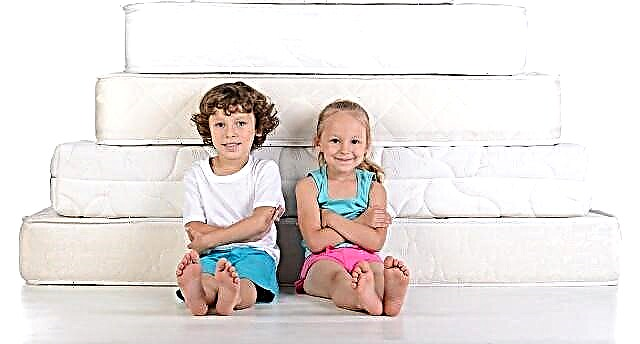
Spring mattresses
Which mattress is best to choose for a child. Spring mattresses are comfortable for both children and adults. There are many models of spring mattresses. All of them are divided into two types, depending on the design of the inner metal frame:
- Bonnel type blocks with sequential lock dependent spring attachment - in them, during compression, the springs pull adjacent ones and are attached to each other using a special wire,
- blocks based on springs independent from each other - each is in a separate case made of durable breathable material, there is no connection between the springs.
 Mattress with spring blocks
Mattress with spring blocksBonnel spring blocks began to be used in furniture production more than a hundred years ago. This design is considered obsolete. Now it is used in economy class mattresses. Modern soft fillers guarantee the absence of creaking and a long service life of such mattresses.
The disadvantage of mattresses based on dependent blocks is the effect of a wave or a hammock, which is formed due to the fact that all springs are firmly connected to each other. Therefore, such mattresses cannot support the child’s spine in a uniform position: the mattresses bend under the heavy parts of the body and lift the lighter ones.
Mattresses with independent spring blocks TFK or PocketSprings are made of barrel-shaped springs that work independently. When compressing one spring, the adjacent spring remains unused. In such mattresses there is no sagging effect, they fluctuate less when changing the posture of the body, they are absolutely silent.
On mattresses with independent spring blocks, the spine of a sleeping child takes a natural shape, which ensures the correct position of the baby's body during sleep. But during wakefulness, any of the spring mattresses, especially with dependent blocks, can become a trampoline for a child, and this is not always useful and convenient.

Springless mattresses
Which mattress is best to choose for a child. Until the 19th century, people slept on mattresses filled, depending on income, with down, hay, wool, feathers, cotton. These mattresses are actually a prototype of springless mattresses that are used in everyday life of people of the 21st century. For springless children's mattresses are characterized by durability, noiselessness, comfortable stiffness, lack of metal parts. They do not require complicated care.
Such mattresses can be of any rigidity. They are resilient, very comfortable. The toughest mattress models are springless. Modern springless mattresses began to be produced with the advent of new technologies in the production of synthetic fillers - latex, polyurethane foam, foam rubber, thermally bonded polyester fibers. In addition, the mattresses are filled with natural materials - coconut coir, sisal, buckwheat husk, sea grass.
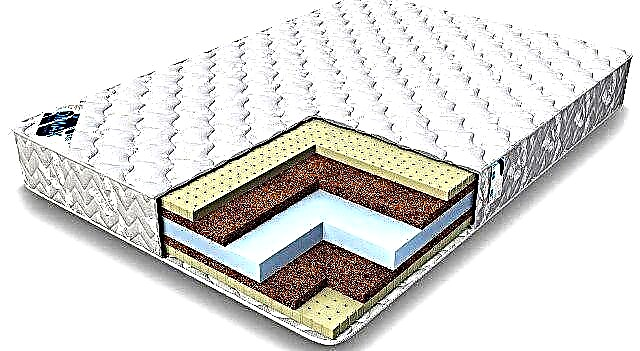 Springless mattress
Springless mattress
Natural fillers of springless mattresses are appreciated for their high elasticity, strength, wear resistance, elasticity. These materials pass air well, allow other materials to breathe, and do not retain moisture. They are antistatic, do not attract dust, absorb sounds. These mattresses have good orthopedic properties.
Orthopedic mattresses
Mattresses ensuring the correct position of the child's body during rest are orthopedic mattresses. After sleeping on an orthopedic mattress, the back does not hurt, muscles are not strained, there are no negative feelings, the person feels well rested. This effect can be achieved by using independent spring blocks or foam materials as internal frames.

The state-of-the-art materials Memoryfoam, Visco-elastic, Memoform, Memoflex are a type of polyurethane foam having open cells that allow air to pass through. They change their softness in contact with human heat, adjust to the contours of the body. Thanks to these materials with the effect of memory, the suffering of people with paralysis who have suffered strokes, burns, damage to the skin, limbs is alleviated.
What stiffness mattress is best for a child

What stiffness mattress is best for a child. Which mattress is best to choose for a child. Specialists recommend mattresses with natural rigid fillers of a springless design to be used for sleeping infants and children up to 3 years old. Preschoolers need to crib mattresses of medium hardness. Pupils are better off sleeping on orthopedic double-sided mattresses, with different stiffnesses of beds. Parents, if necessary, depending on the condition of the child will be able to choose the measure of rigidity of the mattress.
How to choose the right mattress for a child 1 year old
Which mattress is best to choose for a child. Very young children sleep up to 20 hours a day. Year-old children, although they sleep less at night, but they can fall asleep several times during the day. This is necessary for the growth of the child and restoration of his strength. Therefore, parents take the choice of a mattress for children about one year old very seriously. Springless mattresses are placed in the crib for babies 1 year old.
Mattresses should be made of environmentally-friendly materials to prevent allergic reactions. The rigidity and elasticity of the mattress should be sufficient so that there is no back pain and make the child's posture beautiful. It should not deform under the weight of the baby's body. The mattress should have a removable cover so that it can be easily washed, dried, cleaned.

Which mattress to choose a child 3 years old
To grown up babies who begin to actively talk and delve into the lives of adults, you can provide an independent choice of their mattress. At the age of 3 years, the spine in children is already formed, so not too hard mattresses are quite suitable for sleeping such children.
The choice can fall on both spring and springless mattresses. If a child likes to jump, then a spring mattress with an independent unit will become for him a place of sleep and a playground. Choosing a mattress, pay attention to the quality of external and internal materials.
 Right baby mattress
Right baby mattress
Mattresses filled with cotton, batting or foam absorb moisture, insects can appear in them, bacteria multiply, they are difficult to clean and dry, impossible to wash. These mattresses are made using outdated technologies that do not allow for a long time to maintain their normal condition.
The best options for filling mattresses for children are high-quality polyurethane foam, coconut fiber, felt. Covers for children's mattresses are made of cotton, wool or linen. These fabrics do not retain moisture inside mattresses, are environmentally friendly and hypoallergenic.
How to choose a mattress for a newborn in a crib
The health of a newborn child depends on the quality of his sleep. After all, this condition has long remained fundamental in the life of a small person. The mattress for the baby in the first place should be springless and appropriate for the size of the crib so that it does not move out or simply does not fit in the crib. The bed itself should be with a rigid bed surface.

